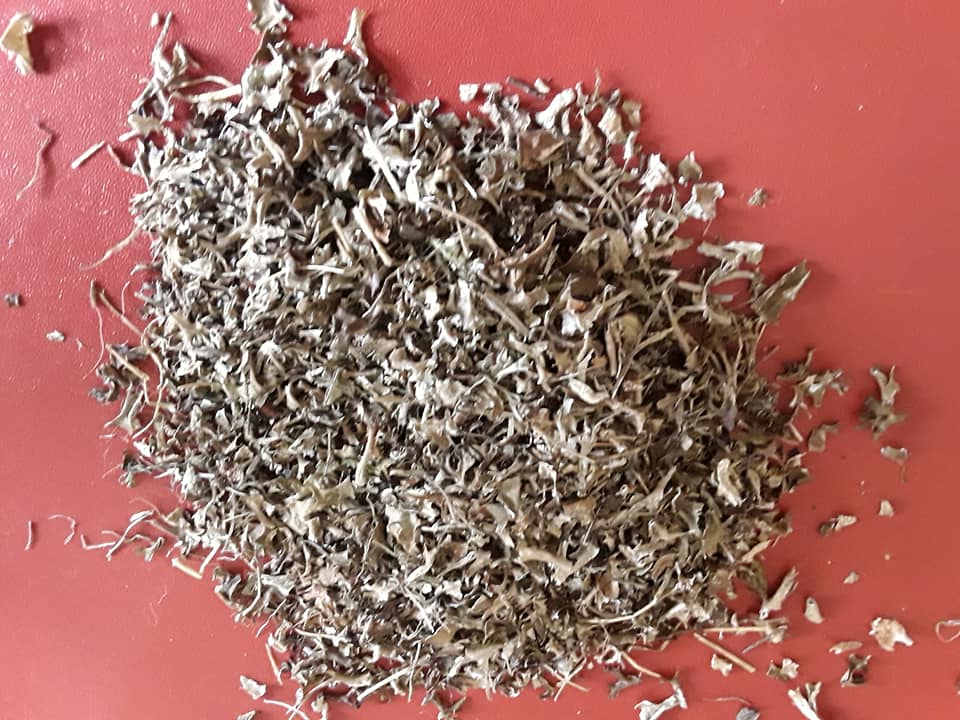
Iceland moss is a lichen. Lichens consist of algae and fungus growing together in a mutually helpful relationship. Lichens draw their nutrients from the environment and are easily contaminated. They grow well in Iceland because it is one of the least polluted countries in the world. Most of the lichens in Europe were contaminated by the fallout from the Chernobyl nuclear plant accident, but Iceland received much less radioactivity, and the lichens were relatively safe.
Iceland moss is used for treating
- irritation of the mouth and throat
- loss of appetite
- common cold
- dry cough
- bronchitis
- indigestion
- fevers
- lung disease
- kidney and bladder complaints
- and the tendency toward infection.
Some people apply Iceland moss directly to poorly healing wounds.
In foods, Iceland moss is used as an emergency food source in Iceland, a highly nutritious food source. The lichens were prepared in a number of ways ranging from Iceland Moss milk, Iceland Moss porridge and breads to offal dishes and to make tea. Icelandic Moss was and still is a valuable food source for reindeer, caribou, musk oxen and moose. In manufacturing, Iceland moss is used as a flavoring in alcoholic beverages.
The working of this Icelandic moss seems to be in the soothing action it has and it might also reduce the growth of bacteria. It is thought that Icelanders have been using Icelandic Moss since the time of settlement in 874. The first mention of Iceland moss use in Iceland is in Jónsbók (Book of Laws) from 1281, which states that it is forbidden to trespass on other farms to pick lichens. The Icelandic sagas also contain references to lichen picking expeditions where women and children went up on horseback into the mountains to pick it, with one adult man in attendance for supervision.They slept in tents and packed the lichen in skin bags – Icelandic Moss was a life-saver in hard times. Since grain growing in Iceland never took off due to the unsuitable climate and terrain, moss was their staple. The more moss that was growing on a persons property, the more valuable the land was considered.
Thought to be the very first lichen used as food by humans, Icelandic Moss is one of forty species of Cetraria. It has been used in European folk medicine for centuries, primarily as a remedy for coughs and other ailments of the respiratory system. It was also traditionally used as a galactagogue – a herb that stimulates milk flow in breastfeeding mothers. Whilst it grows in many alpine areas of the Northern Hemisphere, it is most famous for growing abundantly on the mineral-rich volcanic soil, in the pure, unpolluted air of the ancient lava fields in Iceland.
Icelandic Moss has a beneficial use against coughs, colds and bronchitis, and is also powerfully antibiotic, containing usnic acid and other lichen acids that combat bacteria and viruses. Icelandic Moss is classed as a bitter herb – it stimulates digestive enzymes and enhances the body’s ability to absorb nutrients whilst it is in itself a highly nutritious food. So is very important to digestive health.
Icelandic Moss tea is made by pouring 1 cup of boiling water over 1–2 tsp of powdered Iceland Moss. The mixture is covered and steeped for 10–15 minutes. Honey can be added to the tea to sweeten and enhance its healing properties.
